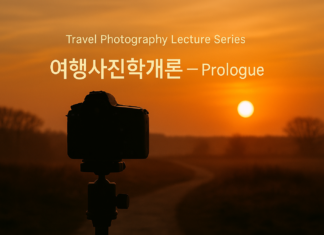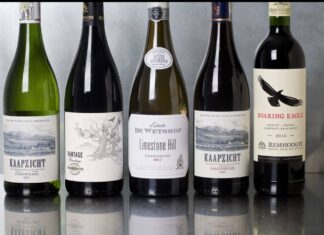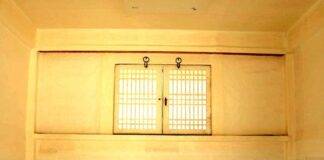by Dr. Howard Johnson (Cultural Historian, UK)
In the very heart of Seoul, where traffic races down Yulgok-ro, one can suddenly step out of modern noise and into the silence of history. The road you’re standing on—once part of the royal walkway known as Eodo (御道)—was the sacred path the kings of Joseon took to reach Jongmyo Shrine.
Yulgok-ro is more than just a thoroughfare. It slices through time, built atop the footsteps of royalty. Though now overtaken by vehicles and street signs, it carries echoes of royal dignity, order, and ritual. And at its end lies Jongmyo—where Joseon still breathes.
Jongmyo – Where a Dynasty Preserved Itself
In 1395, just after founding the Joseon Dynasty, King Taejo built Jongmyo alongside Gyeongbokgung Palace. It was not simply a royal shrine; it was a declaration of national identity and ideology. In fact, the downfall of a dynasty was often phrased as the collapse of Jongmyo-sajik—“the royal shrine and altar to gods of land and grain.”
Jongmyo enshrines the ancestral tablets of kings and queens. The Sajik—sacrifices to deities of land and grain—was the spiritual counterpart. Together, they formed the backbone of Joseon’s legitimacy and cosmos. Jongmyo was not for the dead; it was a living declaration of the nation’s spirit.
Jeongjeon and Yeongnyeongjeon – Sacred Halls of Legacy
Jongmyo is divided into two main halls. The first is Jeongjeon, the main hall, where the ancestral tablets of officially recognized kings and queens are housed. Its 19 chambers, each reserved for a royal pair, form a symbolic timeline of Joseon itself.
The second is Yeongnyeongjeon, dedicated to those posthumously honored as kings—chujeon wang, or “honorary kings.” Though they never ruled, their bloodline and virtue earned them elevation. This space reveals Joseon’s deep concern with heritage, legitimacy, and reverence for lineage.
Jongmyo Jerye – Ritual as the Embodiment of Nationhood
Jongmyo existed for one grand purpose: royal ritual. But this was no mere ceremony of remembrance—it was politics, public morality, and royal virtue on display.
The king personally performed rites three times a year: spring, summer, and autumn. These rites consisted of 27 meticulously choreographed steps—from initial offerings to final libations. In these movements lay the blueprint of Joseon’s cosmology.
With each bow, each step, each cup of wine offered, the king re-affirmed his duty and the social order of Joseon.
Jongmyo Jeryeak – When Music Became a Statecraft
These rituals are incomplete without music. Jongmyo Jeryeak, the ritual music, was systematized by King Sejong and remains one of the highest forms of court music in Korea. It fuses refined instrumental ensembles, chant, and dance.
Two major suites dominate the performance:
Botaepyeong: invoking peace
Jeongdaeeop: honoring ancestral achievements
Dance is equally symbolic:
Munmu (문무): gentle, crane-inspired movements for civil virtue
Mumu (무무): martial dance with spears and shields
The music is not just sound—it is the rhythm of governance. The dance is not just motion—it is the posture of a moral order.
UNESCO World Intangible Heritage – A Living Legacy
In 2001, both the Jerye rituals and Jeryeak music were inscribed by UNESCO as Masterpieces of the Oral and Intangible Heritage of Humanity. This was not for preservation alone—but because the rituals are still practiced today.
Few cultures maintain living traditions of architecture, ritual, music, and dance so fully intact and performed regularly. Joseon was a dynasty of action, and this living heritage proves its spirit endures.
Yulgok-ro – Severed Path, Restored Memory
Originally, Jongmyo and the nearby Changdeokgung Palace were connected by a straight royal walkway—the Eodo. But during the Japanese occupation, the path was severed and replaced by modern roads. Yulgok-ro was born.
This wasn’t just urban planning—it was an act of symbolic erasure. Today, Seoul is working to revive the original route through the “Royal Path Restoration Project,” reconnecting time and tradition.
When to Witness Jongmyo Jerye
The full reenactment of the Jongmyo Jerye ceremony is held annually on the first Sunday of May.
Hosted by the Cultural Heritage Administration with cooperation from the National Gugak Center.
Includes the complete ritual, music, costumes, and choreographed movements.
Reservations are required for public viewing.
Miniature versions of the ritual and performances of the Jeryeak are also held seasonally at the National Gugak Center.
🕰️ Visitor Info & Pro Tips
Hours: Tue–Sun, 9 AM – 6 PM (Closed Mondays)
Admission: 1,000 KRW (Free for seniors 65+)
Guided tours: Available in Korean, English, Chinese, and Japanese at fixed times
Getting there: 5-minute walk from Exit 11 of Jongno 3-ga Station (Line 1), or 10-minute walk from Exit 3 of Anguk Station (Line 3)












![[Travel Korea] Baekdamsa Temple in Seoraksan Mountain](https://thetravelnews.co.kr/wp-content/uploads/2023/06/1686781432298-324x160.jpg)

